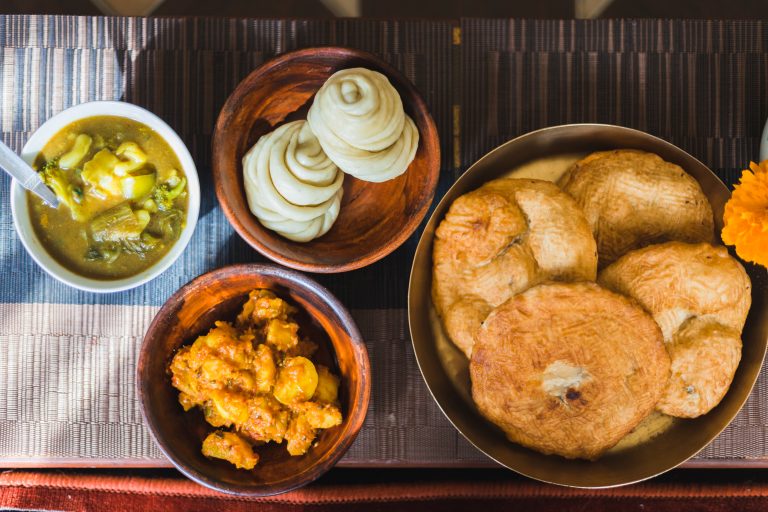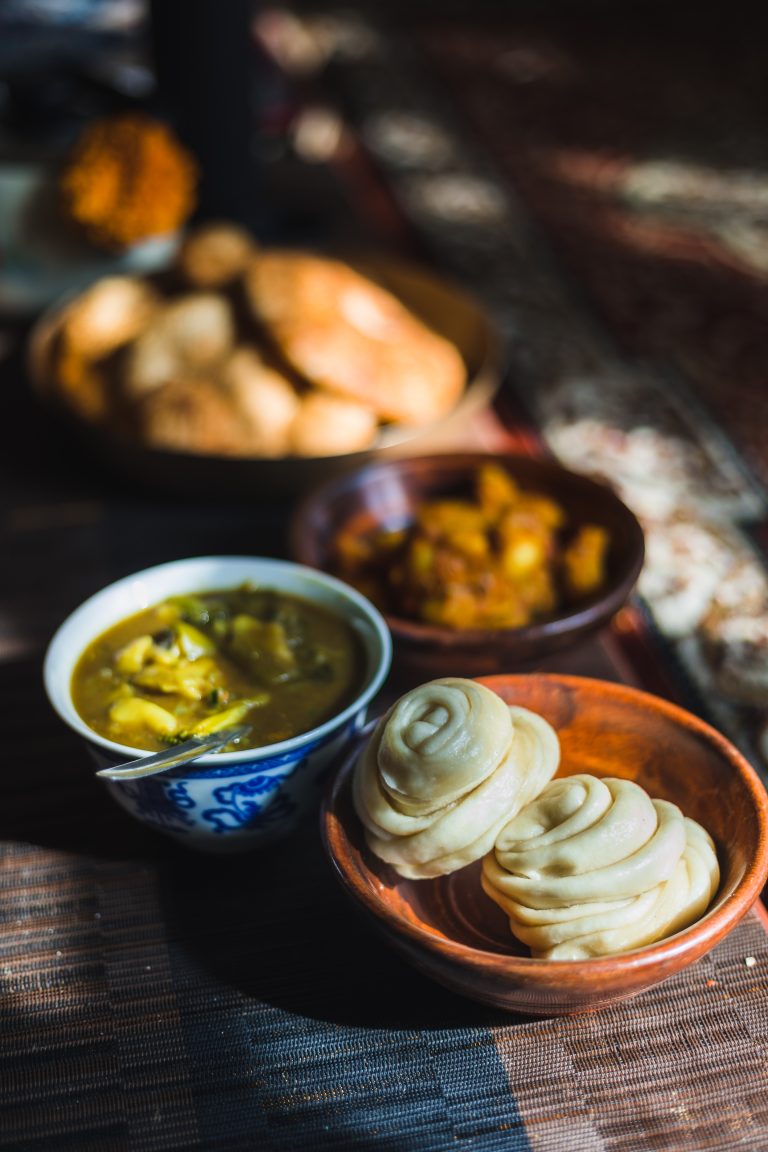Lahaul Valley, nestled amidst the awe-inspiring Himalayas, is a treasure trove of breathtaking landscapes and a vibrant cultural heritage. The people of Lahaul and Spiti follow a mixture of Hinduism and Buddhism with a culture that is profoundly impacted by Tibetan Buddhism. However, the region’s rural cooking and unique culinary offerings often remain unexplored. In this blog post, we will delve into the traditional cooking methods, local ingredients, and distinctive dishes of Lahaul, highlighting how they can enhance local communities and attract tourists. Join us on this culinary journey through the flavors of Lahaul!
1. Unveiling Traditional Cooking Methods in Lahaul
1. Fermentation: Fermentation is a traditional technique used in Lahaul & Spiti to preserve foods and create unique flavors. Fermented beverages (Chhang/Aaraah) are prepared by allowing natural fermentation processes to occur, adding depth and tanginess to the final product. Green vegetables like leafy farm produce, potatoes, radish, peas,
tomatoes, carrots and cabbages are dried or fermented for storage.
2. Boiled : : Boiling is commonly used methods for cooking rice, lentils, and vegetables in Lahaul & Spiti. Local foods like Thukpa is a one-pot soupy meal of
hand-torn noodles, vegetables and meat and is prepared with boiled technique.
3. Steamed : Steaming is also a very commonly used method for cooking traditional lahauli or spiti food. Steaming is used for prepared their local style cuisines like Momos, Tingmo etc. These are high on nutrition and are part of their day to day food.


2. Savoring Lahaul and Spiti's Distinctive Traditional Dishes
1. Thukpa : A one-pot soupy meal of hand-torn noodles, vegetables and meat.
- Thi Thukpa , a traditional thukpa which is prepared using Sattu & Chhurpey(Local Himalayan Dried Cheese).
- Bultu Thukpa : a traditional thukpa which is boiled wit Orgainic vegetables and local Pasta.
2. Momos : Who doesn’t love small little dimsums. Locally known as “Tchong” in Lahauli .It is a significatnt part of all tibetan cuisine and also comes with various versions of itself. Starting with vegetarian flavours to meat based flavours, from circular momos to altogether a crescent shaped momos. These are prepared with steaming technique and is loved by locals and tourists visiting this region.
3. Timmo/Tingmo & Oddong: Prepared with Steaming technique, timmo is a steamed traditional in its most beautiful shape and form and is usually served with Oddong (Lahauli Potato and chickpeas curry).
4. Tsampa : A flour made from roasted and ground barley is eaten in many ways, by mixing with tea or boiled with vegetables. Adding ghee, dried meat and dried yak cheese to tsampa and cooking it in yak or lamb stock to make porridge is a nutritious breakfast, especially in winters. It’s called tsam-thug.
5. Thentuk : A typical Tibetan noodle soup which is just like Thukpa consisting of Vegetables or meat but the difference is the noodles are flattened and are not modelled like noodles. Contemporarily, you can add momos to thenthuk to get a flavourful different yet amazing combination.
6. Baksahchi : A traditional baked Lahauli designed poori/bread which can be teamed with Thi-Thukpa or any home prepared curry, like Oddong or fresh green leafy vegetabled curry. It is a must-try dishes of Lahaul which has a really good taste and can you can experience a whole vibe of Lahual’s traditions in it.
7. Lawaar : A famous tradtional tibetan Buckwheat Pancake which is a household dish for people of Lahaul & Spiti.
8. MaarJua : A sweet dish of Lahaul made with sweetness of Sattu mixed with pure ghee. Sattu is an energetic and equally yummy traditional sweet and in older and these times as well is taken by farmers before heading to farms to get the energy to work whole day in farms.
9. Chhang & Aaraah : These are traditional drinks, fermented and prepared in the local households, which has significance not only in their food but is part of their religious and local culture. Chhang, is a locally brewed Wine , and Aarah, is a locally brewed alcoholic drink, both are prepared using Barley , the difference between them is the technique on how they are brewed. It is a must try traditional drink if you are here in Lahaul & Spiti.


3. Empowering Local Communities and Fostering Tourism
1. Building Economic Opportunities: Understand the potential impact of promoting rural cooking and
foods in Lahaul. Explore how local communities can generate income by offering cooking classes, home-stays, and community-based culinary experiences, empowering them to thrive.
2. Authentic Experiences for Tourists: Highlight the allure of Lahaul’s distinct cuisine in attracting
tourists seeking offbeat culinary adventures. Explore the idea of food festivals and gastronomic tours centered around Lahaul’s traditional dishes, providing unforgettable experiences while preserving the region’s cultural identity.


Food has always been a luxury in the remote and high altitude desert valleys of Spiti and Himachal Pradesh and continues to remain a fascinating delight for interlopers. Most traditional foods of these remote regions are easy to cook boiled, steamed or fermented and consumed with little dependency on supplies of ingredients from outside. No matter the landscape outside which might be laden under 8-10 feet of snow, a kitchen in Lahaul & Spiti has everything it needs inside it.
There is always an effort within the community to preserve their ancient foods and promote them during traditional festivals, fairs and religious events.
Let’s embark on a flavorful journey and support the local community while exploring the rich gastronomic heritage of this enchanting Himalayan paradise.



Comment (0)